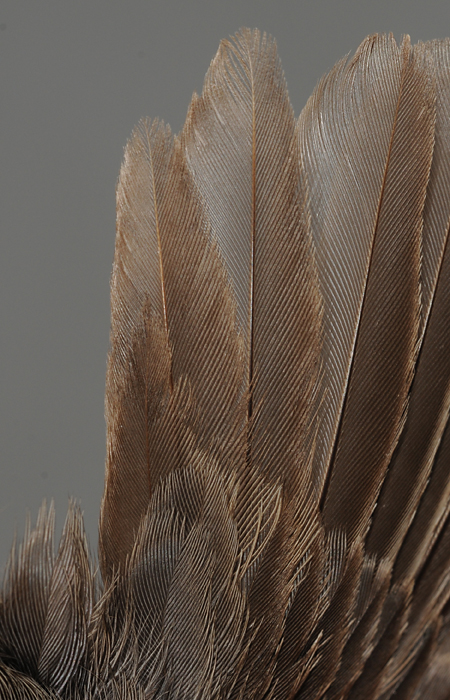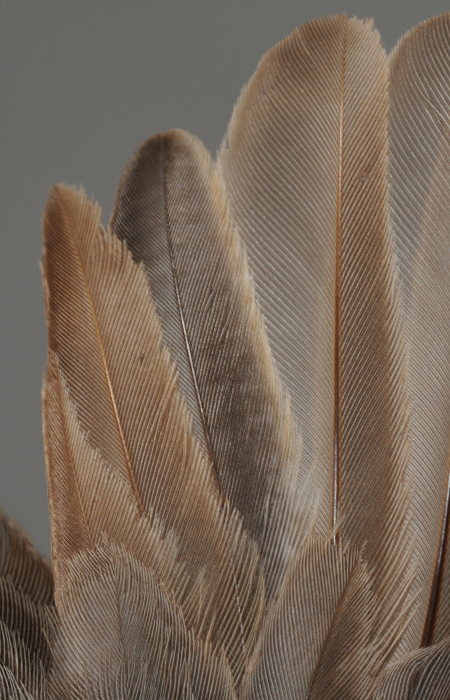

Black Redstart
AGE – BEST CRITERIA:
Autumn criterias are still applicable, though 2cy are more affected to wear during the winter than adult. Moult contrasts present in the wing of 2cy, generally among inner GC and sometimes TT. Adult birds show a uniform plumage without moult contrasts.
2cy:

2cy April. All three TT are unmoulted juvenile, showing a pale brownish ground colour and typical wear. Note the contrast to the inner post-juvenile GC. Juvenile TT can not be used for sexing (se Sexing-chapter). [CP42921]

2cy May. The longest T is moulted post-juvenile (note the contrast to the juvenile shorter two TT and the juvenile SS, being darker brownish-grey and of better quality with fresher edges. Most young birds do not include TT in the post-juvenile moult, but renewal of singel (or all) TT are not rare (and birds with more extensive post-juvenile moult may even include single SS). Additionally, birds with post-juvenile TT can often also be sexed (se Sexing-chapter). [CP45262]
Ringers’ DigiGuide is sponsored by: